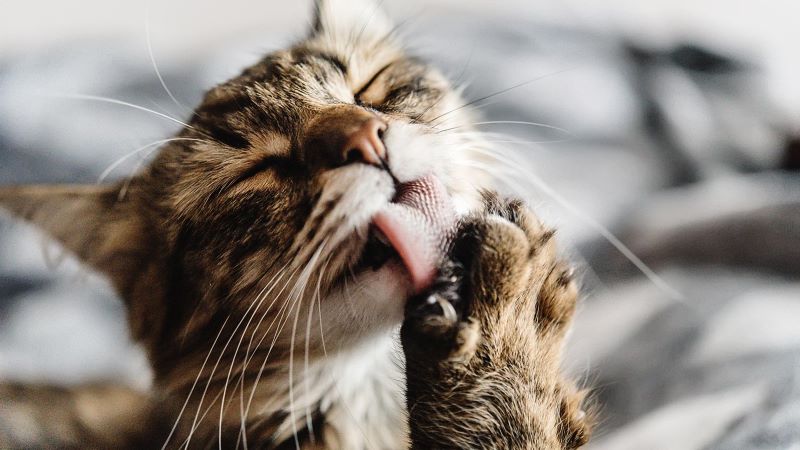One of the amazing things about cats is their ability to groom themselves. In the petfinder.com article, Why Do Cats Lick Themselves, Barbara Pezzanite, Ph.D., explains how a cat uses his natural born instincts to stay clean: “[Cats have] a barbed tongue with which to lick, forepaws they moisten with saliva and use as a surrogate washcloth, and teeth to dig out tougher debris.” But what happens when kitty stops caring for himself?
Why has my cat stopped grooming?
There are many reasons your cat may stop grooming himself: weight gain, arthritis, and illness are just a few. Lack of grooming can lead to tangled, matted fur. Stephanie Liff, DVM and medical director of Pure Paws Vet Care in Manhattan and Brooklyn, NY says, “Pets get matted fur either from having long fur that is not combed out frequently, or in cats it’s more common when they stop grooming themselves due to discomfort or illness.”
What to do if your cat stops grooming
So, what’s a cat parent to do when their cat has stopped grooming?
Visit your veterinarian
You should visit the vet to rule out any underlying problems. Matting may be a complication from a skin condition, diabetes, and/or hyperthyroidism. But even if these medical issues are not present, matting can still cause serious pain and discomfort. According to Liff, “Severe matting can restrict a limb, and you can even have damage such as deep wounds, swelling of the feet, or bed sore-like injuries.”
Schedule an appointment with a cat groomer
Once you’ve ruled out a medical issue, let your groomer clip the mats. It’s best to leave the clipping to the professionals since matted fur is typically close to the skin. Liff recommends bathing your cat by shampooing, conditioning, and thoroughly drying your cat’s fur after the clipping. Then, brush his fur with a soft-bristle brush every few days. Try to spend about three minutes running the brush through his fur.
Pick up the slack
Of course, it is best to prevent the tangles in the first place by being consistent in your brushing practices, especially if you notice your cat slacking off on his own grooming. Valerie Lopez, pro groomer with the spcaLA grooming salon recommends brushing cats with long coats two to three times per week, using a metal comb. She also suggests using a tool that will penetrate the coat down to the skin (we love our furminator--this one for cats got great reviews) on pets with thick, shedding undercoats. “The comb will help the owner find the hidden mats below the top layer of the coat,” says Lopez.
Grooming tools
If you remain diligent in grooming your pet, hopefully you can avoid dealing with matting fur. But if you find yourself having consistent issues with matting, you may want to consider the way you are grooming, and the tools you are using. Always use a brush with bristles that can get through the thick outer coat, and avoid getting any existing mats wet. Once the coat becomes wet, the matting will become tighter.
Be proactive with your cat's health
As a pet owner, you're responsible for keeping your cat healthy and feeling his best. Routine grooming and keeping a close eye on changes in your cat's behavior can help you catch any changes in your pet before they become too sick. Enroll your cat in a pet insurance policy before they begin showing symptoms of illness such as stopping grooming to ensure you can provide the best care possible!

